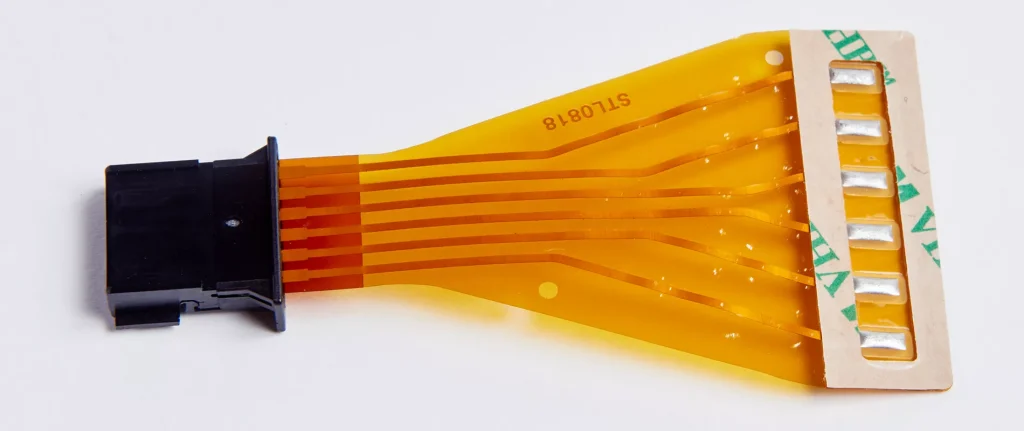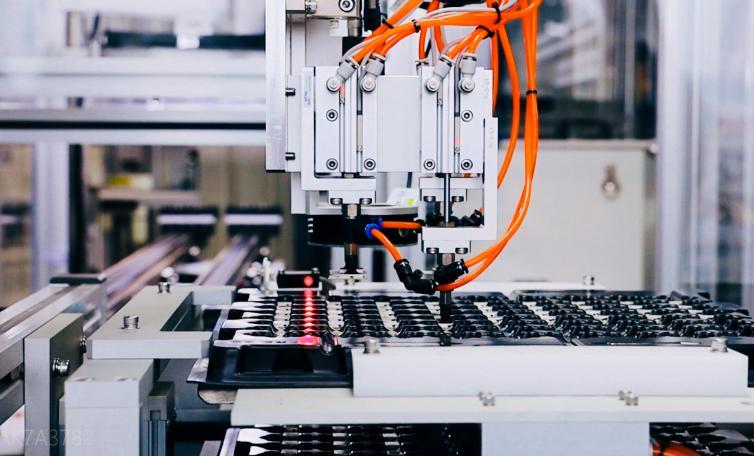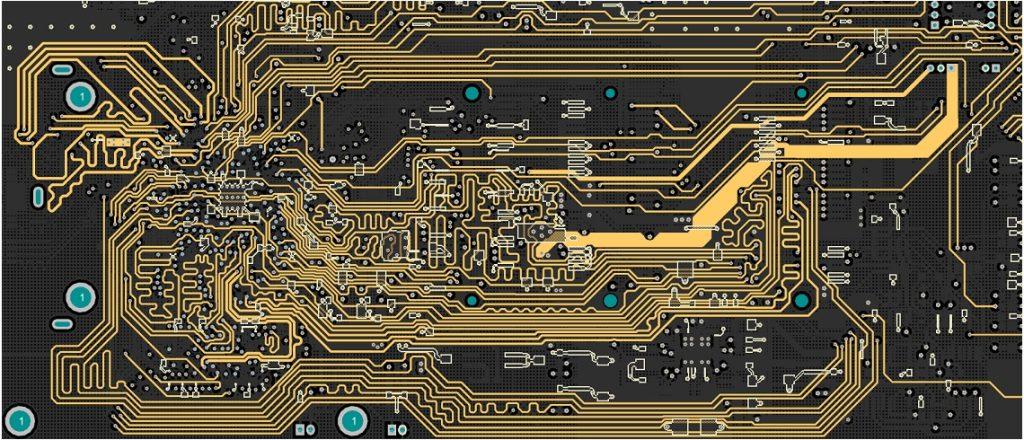FPC has the characteristics of a lightweight, simple structure and easy wiring connection, which is a good wiring carrier to connect the electronic components of automobiles, and it has obvious advantages in safety, assembly efficiency, range, and weight reduction; FPC connection solution has become the absolute main solution in the power battery of passenger cars. With the increasing degree of automotive intelligence, the demand for electronic components in lighting systems, display systems, power systems, battery management systems, and sensors has increased, and the number of wiring carriers required to connect electronic components has increased accordingly. As traditional wiring carriers, automotive wiring harnesses are bulky and complicated to connect, so they cannot meet the development trend of continuously increasing the number of electronic components in new energy vehicles. In contrast, automotive FPCs are widely used in new energy vehicles because of their lightweight, simple structure and convenient wiring connections.
With the rapid development of new energy vehicles, the demand for the automotive FPC market has surged. According to EV Sales, global new energy vehicle sales will grow from 770,000 units in 2016 to 6.75 million units in 2021. According to Matt Bohlsen’s latest forecast, global new energy vehicle sales are expected to reach 10.4 million units in 2022. According to the China Association of Automobile Manufacturers, China’s new energy vehicle sales will grow from 517,000 units in 2016 to 3.521 million units in 2021, with a market share of 13.4%, and the China Association of Automobile Manufacturers expects China’s new energy passenger vehicle sales to reach 6 million units in 2022. The explosive growth of new energy vehicles has led to the rapid development of power batteries in the field of new energy, FPC is an important accessory for new energy power batteries, and compared with traditional wiring harnesses, FPC can achieve modular and automated production, automated production to improve production efficiency, and with the significant characteristics of FPC itself can achieve lightweight batteries, higher safety performance, FPC to replace traditional wiring harnesses is the trend.
According to the new PCB Industry Research Institute, in 2018, the automotive FPC market size reached 5.3 billion yuan, an increase of 8.4%, the main growth driver of the market from the increase in automotive electronics and new energy vehicle penetration rate. 2016-2022, the annual growth rate of automotive FPC maintained between 6%-9%; to 2022, the automotive FPC market size will grow to 7 billion yuan.
In 2023, automotive electronics will open a new blue ocean of FPC demand. Automotive electronics applications are mainly concentrated in the power system, chassis system, body system, driving information system, and security system. With the increasing level of electronics in automobiles, sensors are widely used, and the proportion of automotive electronics in the cost of the vehicle is gradually increasing. According to the data of the “2019 Automotive Electronics Industry Development White Paper” released by the Electronic Information Research Institute of Sadie Intelligence, the proportion of automotive electronics in the cost of the whole vehicle rose from 15% to 30% from 1990 to 2010. It is expected that automotive electronics will account for 50% of the cost of the whole vehicle in 2030. In 2020, the unit price of FPC products was about 60 yuan; each battery module needs to be equipped with the use of an FPC; the current mainstream models with 7-12 modules are mostly used, according to the calculation of 10 modules, the value of the new FPC single car is about 600 yuan.
Power battery FPC is expected to gradually replace the traditional wiring harness program and become the mainstream trend. The wiring harness is the nerve system of the car, consisting of various sizes and shapes of wires and connector components. Compared with traditional harnesses, FPC harnesses are designed with fuse protection current to avoid battery combustion or explosion, with high safety performance, occupy less space in the battery pack, and meet the development direction of lightweight automotive electronics. In terms of technology, the FPC harness solution has many advantages, such as high integration, automated assembly, assembly accuracy, ultra-thin thickness, ultra-softness, and lightweight. In addition, integrating electronic modules, switches, and FPC harnesses can reduce the use of connectors and accessories and lower costs. Therefore, applying an FPC harness can better optimize space, reduce energy consumption, and realize the green travel of the whole vehicle. Currently, FPC is being used in a large number of new energy vehicles to replace the traditional battery sampling line.
FPC has been applied to the energy storage battery, and its usage is expected to increase with the development of the energy storage market; FPC replaces traditional wiring harness to monitor and transmit information on the operation status of the energy storage battery; FPC can protect the chip of energy storage battery by automatically disconnecting in case of abnormal short circuit; energy storage power plants gradually favor FPC due to its safety and stability, and the application of FPC is expected to further expand in the field of energy storage. The global energy storage battery market will maintain a steady growth trend due to the strategic deployment of global carbon neutrality, the downward trend of energy storage project cost, and the urgent demand for a light storage project and long-term energy storage. Public information shows that Ningde Times, BYD, Tesla, Guoxuan Hi-Tech, AVIC Lithium, Tafel, Xinwanda, Fu Energy, and other companies have applied to FPC.



